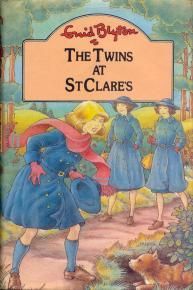I found a copy of an old childhood read, The Twins at St. Clare’s – the first book in the St. Clare’s series by Enid Blyton. Rereading it, I felt like someone had come and tidied away a bit of my joy. St. Clare’s just hadn’t aged very well. I was torn between excusing it for being a product of its time and tossing the book in the back of my cupboard to – hopefully – forget about again. I ended up finishing the book, but it wasn’t a satisfying read. It got me thinking about all the other books I’d read as a kid and a young teen. If I went back, how much would I find that I could no longer tolerate? Was I allowed to enjoy those flawed books without the qualifying; “I was young at the time, and didn’t recognise that actually this was kinda racist/sexist/xenophobic. Anyway…” At the time, I decided I might have been overthinking the whole thing a little. After all, it was a children’s series that originally released way back in 1941 and I hadn’t thought about it at all in almost 15 years. But the question remains valid. Are we allowed to appreciate flawed books? On the surface, the answer is a clear yes. Nothing is without flaws, after all. But is that perhaps taking the easy way out? We have the privilege of living in a time where thousands of new books release every single day. It’s easier than it ever has been to gain access to good stories, the kind that don’t promote harmful stereotypes or condone or promote racism. There’s really no reason to cling to books that promote awful things – and there never was. The classification of a harmful book though, that’s what kept tripping me up. What makes a book harmful? Does a throwaway sentence or the treatment of a minor character count? Is it anything that makes you uncomfortable when you read it? Or is there a need to read books that make you uncomfortable in order to understand those who are different from you?
I read Rin Chupeco’s The Bone Witch trilogy last year and I really enjoyed the storyline, the world-building and the writing style. I read the whole trilogy in the space of an afternoon, in fact. But there was something that marred the experience for me; the way that Chupeco’s protagonist views a society with veiled women. I wrote it off at first, but by the next morning it was niggling at me. But was that not just Chupeco’s attempt to write a flawed protagonist? I struggled to answer that question to my own satisfaction. It’s not always cut and dry, I guess, and the choice of whether to give a piece of work the benefit of the doubt will always have to be done on a one by one basis. There’s no formula for calculating a book’s overall percentage of offensiveness. Personally, I’ve decided to stop reading the books that leave me feeling uncomfortable. Sure, I might miss out on some good books. But, with thousands being published every day, I don’t think I’m going to run out of other options.

